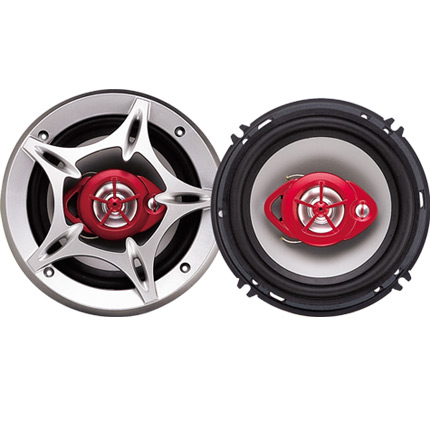stainless steel clutch line
Understanding Stainless Steel Clutch Lines A Comprehensive Guide
When it comes to the performance and reliability of a vehicle, every component plays a critical role. One such component that is often overlooked but essential to the smooth operation of a vehicle's transmission system is the clutch line. Among various types of clutch lines available in the market, stainless steel clutch lines have gained popularity due to their numerous benefits. In this article, we will explore the significance, advantages, and installation process of stainless steel clutch lines, providing you with a comprehensive understanding of this crucial vehicle part.
What is a Clutch Line?
Before diving into the specifics of stainless steel clutch lines, it is important to understand what a clutch line is. The clutch line is a hydraulic line that connects the clutch master cylinder to the clutch slave cylinder. It is responsible for transferring the hydraulic fluid, enabling the clutch mechanism to engage and disengage. A properly functioning clutch line is vital for ensuring smooth gear shifts and overall performance of the vehicle.
Why Choose Stainless Steel?
1. Durability One of the primary advantages of stainless steel clutch lines is their outstanding durability. Unlike rubber or plastic lines, stainless steel is resistant to wear and tear, making it less likely to fail over time. This increased durability is particularly beneficial for high-performance vehicles subjected to intense usage.
2. Corrosion Resistance Stainless steel is inherently resistant to corrosion, which is a significant risk factor for traditional rubber hoses. Exposure to oil, water, and other contaminants can lead to degradation over time. A stainless steel clutch line mitigates this risk, maintaining performance and functionality over a longer period.
3. Flexibility with Strength While stainless steel is a robust material, modern manufacturing techniques have allowed for the creation of flexible stainless steel lines. This flexibility makes it easier to install while still providing the strength necessary to withstand high pressures typically found in hydraulic systems.
4. Improved Performance The use of stainless steel clutch lines can enhance the overall performance of your vehicle. They are designed to handle higher pressures, which translates to better responsiveness when you engage the clutch. This improved performance is especially noticeable in sports and modified vehicles.
5. Aesthetic Appeal Beyond practicality, stainless steel lines offer a sleek and polished look that can enhance the overall appearance of your engine bay. Many enthusiasts appreciate the aesthetic value of high-quality materials, and stainless steel clutch lines fit the bill perfectly.
Installation Process
stainless steel clutch line

If you've decided to upgrade to stainless steel clutch lines, you might wonder about the installation process. While it is advisable to have a professional mechanic handle the installation, understanding the process can be beneficial.
1. Gather Tools and Materials You will need a set of tools including wrenches, a socket set, and possibly a flare nut wrench. Additionally, ensure you have the correct size of stainless steel clutch line for your vehicle.
2. Prepare the Vehicle Begin by securing the vehicle on a flat surface and ensuring that it is in gear or has a safety lock in place. You may need to remove certain components to access the clutch system.
3. Drain the Hydraulic Fluid It is important to prevent contamination by draining the old hydraulic fluid from the system. Ensure that you have a suitable container for the fluid.
4. Remove Old Clutch Line Carefully disconnect the old clutch line from both the master and slave cylinders, taking care not to damage the fittings. This may require some finesse, especially in tight spaces.
5. Install the Stainless Steel Clutch Line Once the old line is removed, install the new stainless steel clutch line by connecting it to the master cylinder and the slave cylinder. Ensure that the connections are tight to prevent leaks.
6. Replenish Hydraulic Fluid After installation, refill the clutch system with the appropriate hydraulic fluid. Bleed the system to remove any air pockets, ensuring proper functionality.
7. Test the Clutch Finally, test the clutch to ensure everything is functioning smoothly before taking the vehicle on a road test.
Conclusion
Stainless steel clutch lines are an excellent investment for any vehicle owner looking to improve performance and reliability. Their durability, resistance to corrosion, and aesthetic appeal make them a superior choice compared to traditional rubber lines. Whether you're a car enthusiast or just looking to ensure your everyday vehicle is in top condition, upgrading to stainless steel clutch lines could be a game-changer. Remember to consider professional installation to guarantee the best results and enjoy the enhanced driving experience that comes with this upgrade.
-
Workings of Clutch Pipe and Hose SystemsNewsJun.04,2025
-
The Inner Workings of Hand Brake Cable SystemsNewsJun.04,2025
-
The Secrets of Throttle and Accelerator CablesNewsJun.04,2025
-
The Hidden Lifeline of Your Transmission Gear Shift CablesNewsJun.04,2025
-
Demystifying Gear Cables and Shift LinkagesNewsJun.04,2025
-
Decoding Clutch Line Systems A Comprehensive GuideNewsJun.04,2025
